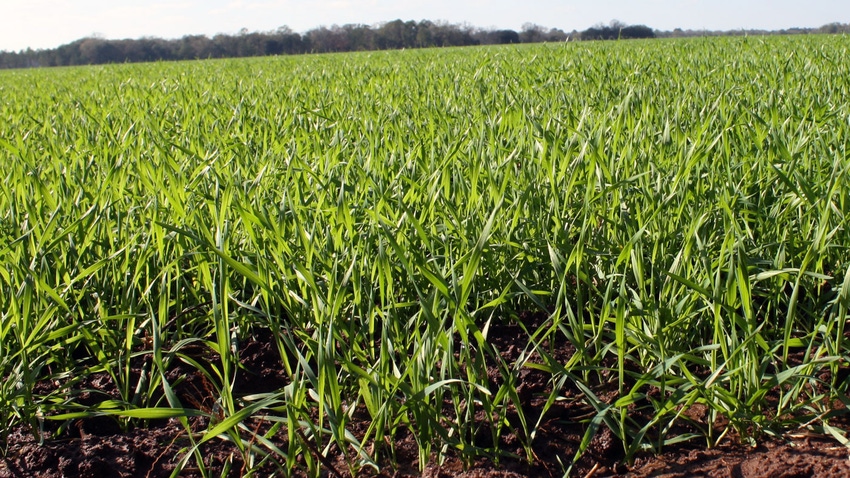November 19, 2020

Cover crops are an investment. To get the most out of their investment, producers should manage cover crops to maximize benefits and minimize costs. Audrey Gamble, an Alabama Cooperative Extension System soil scientist recommends producers place great emphasis on cover crops this winter.
Many soils in Alabama have low levels of soil organic matter due to the warm climate, coarse-textured soils and intensive farming practices historically used in the state. Planting cover crops is one option to help rebuild soil health and conserve this vital natural resource.
“Many of the benefits associated with cover crops are enhanced by increasing cover crop biomass,” she said. “For example, greater amounts of residue on the soil surface following cover crop termination can help suppress weeds and improve soil moisture retention during the cash crop growing season.”
Cover crops provide added protection against soil erosion, as well as improved soil quality and productivity. Planting cover crops also enables increased water infiltration and storage, improved air quality and water quality.
“When making management decisions regarding cover crop biomass production, there are few costs producers can control,” Gamble said.
Gamble, who is also an assistant professor in the Auburn University Department of Crop, Soil, and Environmental Sciences, shares the following tips to help producers reduce cost while still maintaining biomass production:
Plant early. Planting early is critical for producing high cover crop biomass. High levels of biomass can maximize season-long cover crop benefits for the cash crop that follows. Recent research in Alabama shows that a rye cover crop planted in mid-October with no nitrogen added produces the same amount of biomass as rye planted in early December with 90 pounds of nitrogen applied.
Optimize seeding rates. Producers drilling 90 pounds per acre or more of small grain (Cereal rye or oat) as a cover crop should consider reducing seeding rates to approximately 40 to 60 pounds per acre. Research in Alabama has shown that increasing seeding rates above 40 to 60 pounds does not increase biomass of small grain cover crops. This includes crops like rye, oat and triticale.
Fertilize efficiently. Producers who are unable to plant early may need to apply supplemental nitrogen fertilizer. This will help ensure adequate biomass levels, particularly for late-planted cover crops. It is important to consider weather conditions when determining when to apply nitrogen fertilizer. In years with heavy rainfall, applied nitrogen can be lost through leaching deeper into the soil profile. To improve fertilizer use efficiency, it may be beneficial for producers to wait until spring to make nitrogen applications. This is true during years when producers expect heavy rainfall throughout the fall and winter months. For example, producers would expect heavy fall rainfall during an El Niño year. Waiting to make nitrogen applications would also apply to late-planted cover crops.
Find more information about soil conservation and cover cropping systems by visiting the Healthy Soils section of the Alabama Extension website.
About the Author(s)
You May Also Like




